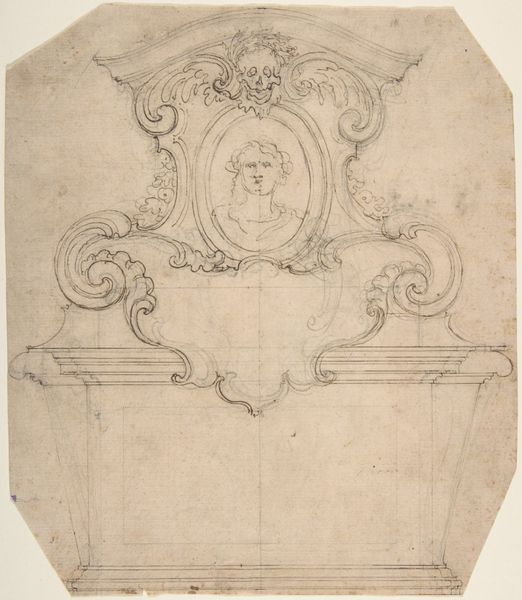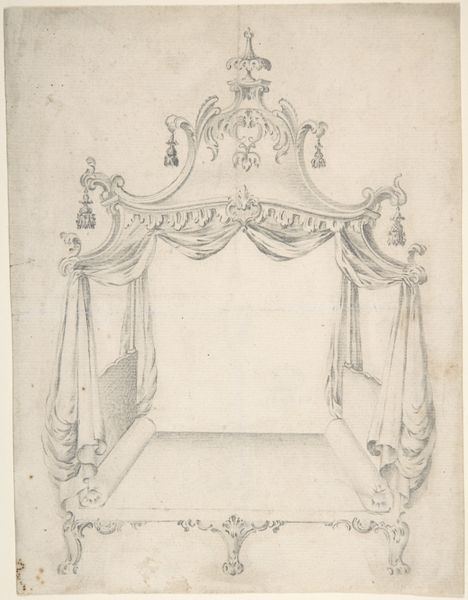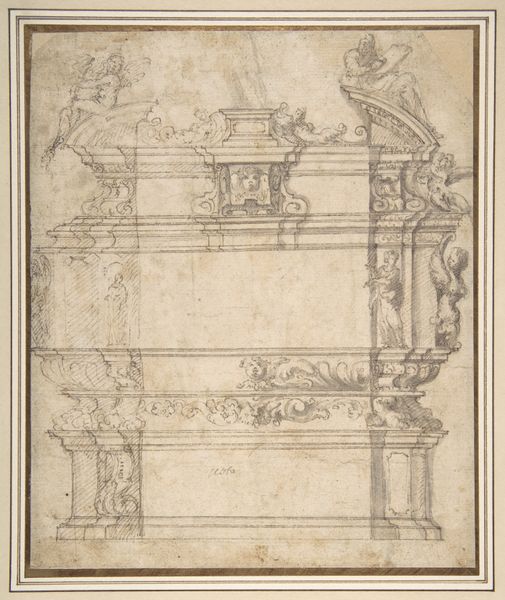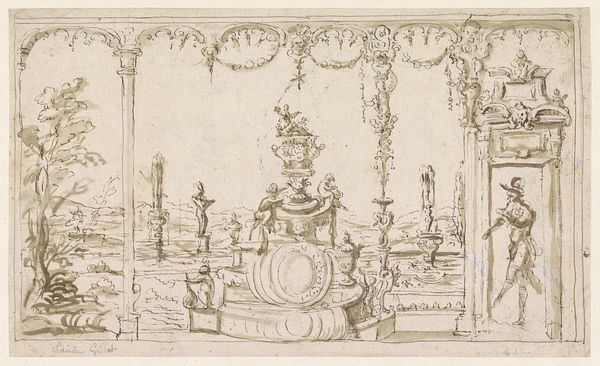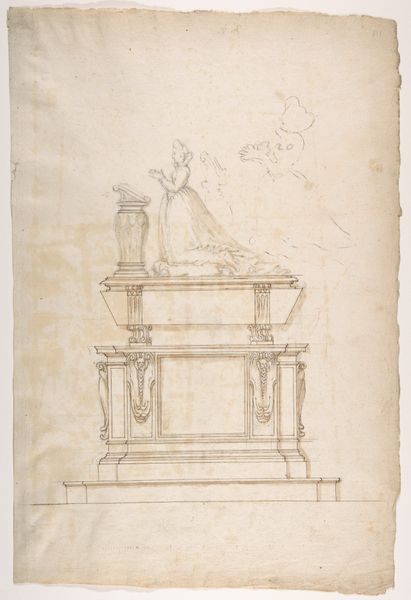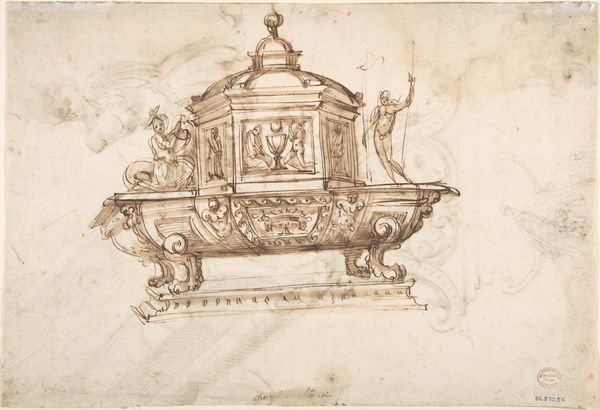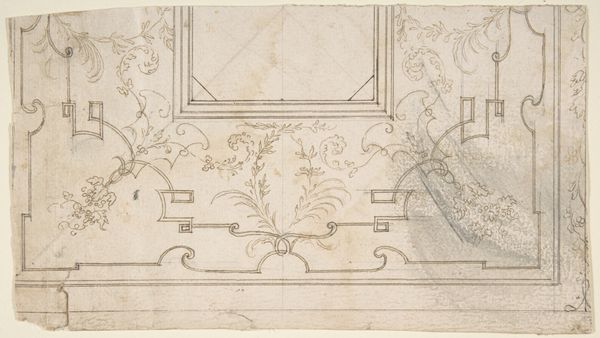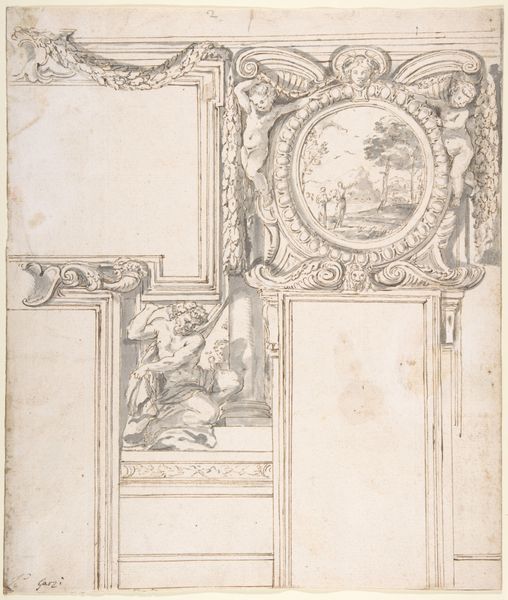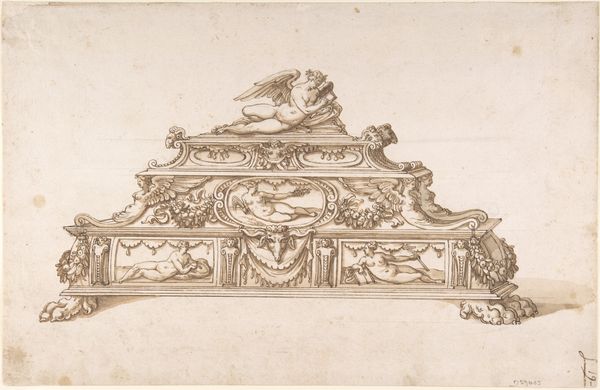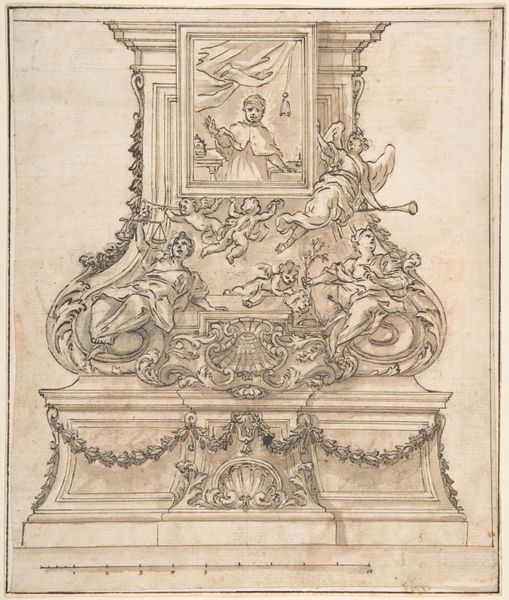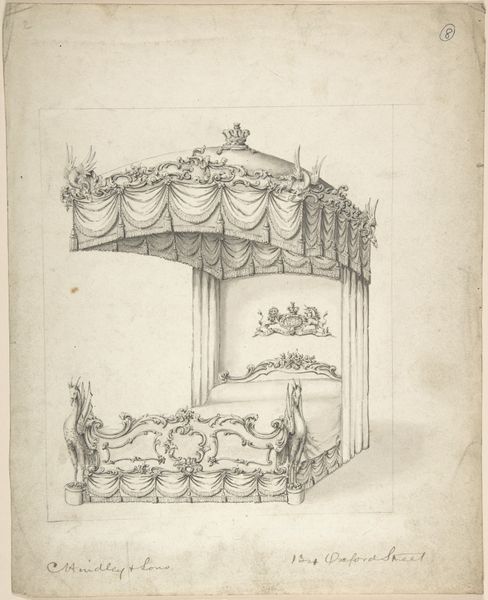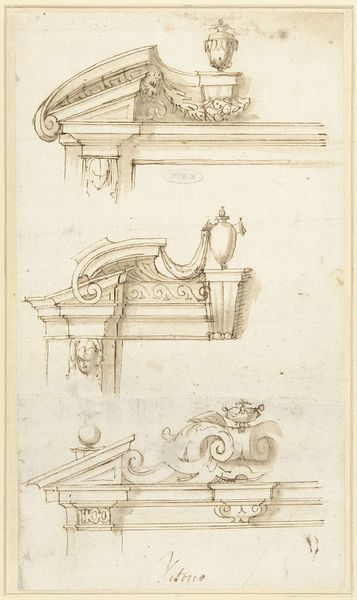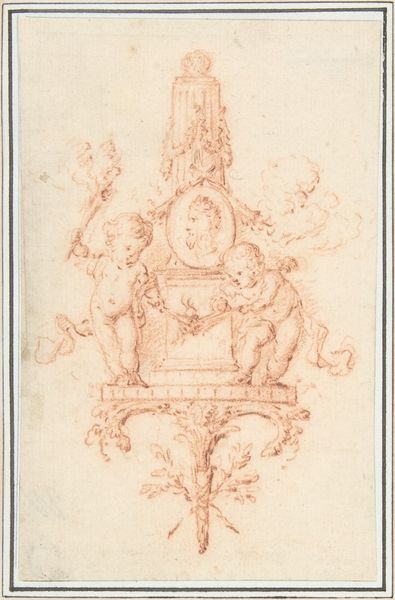
drawing, paper, pencil, pen
#
portrait
#
drawing
#
aged paper
#
toned paper
#
light pencil work
#
baroque
#
old engraving style
#
sketch book
#
paper
#
form
#
personal sketchbook
#
pen-ink sketch
#
pencil
#
pen work
#
sketchbook drawing
#
pen
#
sketchbook art
Dimensions: height 210 mm, width 235 mm
Copyright: Rijks Museum: Open Domain
Editor: So, this is Elias van Nijmegen's "Design for a hall bench with a portrait medallion," dating roughly from 1677 to 1755. It's a drawing done with pen, pencil and ink on paper. The delicate linework really emphasizes the elaborate detail. What catches your eye? Curator: For me, the interesting element is in the 'design' aspect. Here, we see a transition in the social role of art. We're looking at something intended for manufacture and consumption within the domestic sphere. The drawing itself becomes less an artistic end and more a technical instruction. Editor: That's a really interesting perspective. So, you're saying the value isn't so much in the drawing as art, but in what it tells us about the process of creating furniture at that time? Curator: Precisely! Think about the materials it calls for - wood, likely expensive fabrics, possibly imported ornamentation. And who would commission such a piece? It speaks volumes about Baroque tastes trickling down through the wealthy merchant classes, not just the aristocracy. What would you say is more remarkable, the art, or the labour involved in its manifestation? Editor: I never thought about it that way. It really makes me consider who was involved in the whole process, from the initial concept to the construction and placement of this bench. Thank you! Curator: It shows how even seemingly simple images have a broader, materialistic reading, considering the means of production and consumption in different economic classes.
Comments
No comments
Be the first to comment and join the conversation on the ultimate creative platform.
